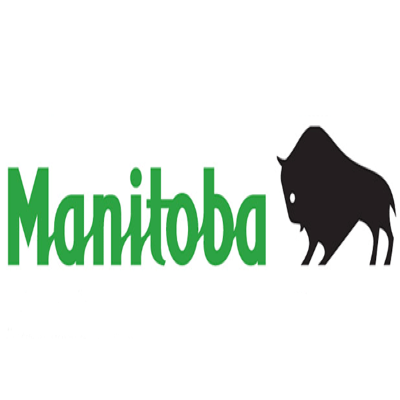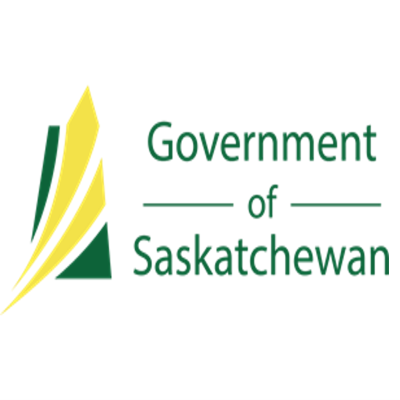Red River
Type of resources
Topics
Keywords
Contact for the resource
Provided by
Formats
Representation types
Update frequencies
status
-

The purpose of this feature layer is to provide the 2009 overland flooding boundary in the Red River Valley. This dataset shows the extent of peak overland flooding in the Red River Valley in 20 09 . Data is based on RADARSAT – 1 satellite imagery. During processing, the raw data set was resampled to 12.5 meter pixel resolution, then classified using PCI Geomatica software which is a specialized software designed to manipulate space born imagery. The final output depicting the flooding boundary is available as a TIFF or Shapefile. Launched in November 1995, RADARSAT-1 was a Canadian-led project which provided useful information to both commercial and scientific users in such fields as disaster management, agriculture, cartography, hydrology, forestry, oceanography, ice studies and coastal monitoring. Equipped with a powerful synthetic aperture radar (SAR) instrument, it acquired images of the Earth day or night, in all weather and through cloud cover, smoke and haze. As of March 2013, the satellite was declared non-operational and is no longer collecting data. Many applications were developed to take advantage of RADARSAT-1 capacity for detecting the presence of water. These included monitoring flooding and the build-up of river ice, and mapping the melting of snow-covered areas. When used for flood monitoring, RADARSAT-1 data helped assess the impact of flooding, predicted the extent and duration of floodwaters, analyzed the environmental impact of water diversion projects, and developed flood mitigation measures. Fields Included:FID : Internal feature numberNAME : Flooded area nameAREA_SQKM : Size of flooded area
-

The purpose of this feature layer is to provide the 1997 overland flooding boundary in the Red River Valley. This dataset shows the extent of peak overland flooding in the Red River Valley in 1997 . Data is based on RADARSAT – 1 satellite imagery. During processing, the raw data set was resampled to 12.5 meter pixel resolution, then classified using PCI Geomatica software which is a specialized software designed to manipulate space born imagery. The final output depicting the flooding boundary is available as a TIFF or Shapefile. Launched in November 1995, RADARSAT-1 was a Canadian-led project which provided useful information to both commercial and scientific users in such fields as disaster management, agriculture, cartography, hydrology, forestry, oceanography, ice studies and coastal monitoring. Equipped with a powerful synthetic aperture radar (SAR) instrument, it acquired images of the Earth day or night, in all weather and through cloud cover, smoke and haze. As of March 2013, the satellite was declared non-operational and is no longer collecting data. Many applications were developed to take advantage of RADARSAT-1 capacity for detecting the presence of water. These included monitoring flooding and the build-up of river ice, and mapping the melting of snow-covered areas. When used for flood monitoring, RADARSAT-1 data helped assess the impact of flooding, predicted the extent and duration of floodwaters, analyzed the environmental impact of water diversion projects, and developed flood mitigation measures. Fields Included:FID : Internal feature numberNAME : Flooded area nameAREA_SQKM : Size of flooded area
-

The purpose of this feature layer is to provide the 2011 overland flooding boundary in the Red River Valley. This dataset shows the extent of peak overland flooding in the Red River Valley in 2011. Data is based on RADARSAT – 1 satellite imagery. During processing, the raw data set was resampled to 12.5 meter pixel resolution, then classified using PCI Geomatica software which is a specialized software designed to manipulate space born imagery. The final output depicting the flooding boundary is available as a TIFF or Shapefile. Launched in November 1995, RADARSAT-1 was a Canadian-led project which provided useful information to both commercial and scientific users in such fields as disaster management, agriculture, cartography, hydrology, forestry, oceanography, ice studies and coastal monitoring. Equipped with a powerful synthetic aperture radar (SAR) instrument, it acquired images of the Earth day or night, in all weather and through cloud cover, smoke and haze. As of March 2013, the satellite was declared non-operational and is no longer collecting data. Many applications were developed to take advantage of RADARSAT-1 capacity for detecting the presence of water. These included monitoring flooding and the build-up of river ice, and mapping the melting of snow-covered areas. When used for flood monitoring, RADARSAT-1 data helped assess the impact of flooding, predicted the extent and duration of floodwaters, analyzed the environmental impact of water diversion projects, and developed flood mitigation measures. Fields Included:FID : Internal feature numberNAME : Flooded area nameAREA_SQKM : Size of flooded area
-

These structure, isopach and zero edge files are part of a series of stratigraphic framework maps for the Saskatchewan Phanerozoic Fluids and Petroleum Systems (SPFPS) project. The series of stratigraphic framework maps for the Saskatchewan Phanerozoic Fluids and Petroleum Systems (SPFPS) project have been produced using 2 km equi-spaced modified grids generated from Golden Software’s Surfer 9 kriging algorithm. The dataset used to produce each of the maps in this series was created using data from several projects completed by the Ministry (Christopher, 2003; Saskatchewan Industry and Resources et al., 2004; Kreis et al., 2004; Marsh and Heinemann, 2006; Saskatchewan Ministry of Energy and Resources et al., 2007; Heinemann and Marsh, 2009); these data were validated and edited as required to facilitate correlations between the various regional projects. In addition, to minimize edge effects during contouring, the senior author also generated stratigraphic data from wells in adjacent jurisdictions.
-

These structure, isopach and zero edge files are part of a series of stratigraphic framework maps for the Saskatchewan Phanerozoic Fluids and Petroleum Systems (SPFPS) project. The series of stratigraphic framework maps for the Saskatchewan Phanerozoic Fluids and Petroleum Systems (SPFPS) project have been produced using 2 km equi-spaced modified grids generated from Golden Software’s Surfer 9 kriging algorithm. The dataset used to produce each of the maps in this series was created using data from several projects completed by the Ministry (Christopher, 2003; Saskatchewan Industry and Resources et al., 2004; Kreis et al., 2004; Marsh and Heinemann, 2006; Saskatchewan Ministry of Energy and Resources et al., 2007; Heinemann and Marsh, 2009); these data were validated and edited as required to facilitate correlations between the various regional projects. In addition, to minimize edge effects during contouring, the senior author also generated stratigraphic data from wells in adjacent jurisdictions.
-

These structure, isopach and zero edge files are part of a series of stratigraphic framework maps for the Saskatchewan Phanerozoic Fluids and Petroleum Systems (SPFPS) project. The series of stratigraphic framework maps for the Saskatchewan Phanerozoic Fluids and Petroleum Systems (SPFPS) project have been produced using 2 km equi-spaced modified grids generated from Golden Software’s Surfer 9 kriging algorithm. The dataset used to produce each of the maps in this series was created using data from several projects completed by the Ministry (Christopher, 2003; Saskatchewan Industry and Resources et al., 2004; Kreis et al., 2004; Marsh and Heinemann, 2006; Saskatchewan Ministry of Energy and Resources et al., 2007; Heinemann and Marsh, 2009); these data were validated and edited as required to facilitate correlations between the various regional projects. In addition, to minimize edge effects during contouring, the senior author also generated stratigraphic data from wells in adjacent jurisdictions.
-

These structure, isopach and zero edge files are part of a series of stratigraphic framework maps for the Saskatchewan Phanerozoic Fluids and Petroleum Systems (SPFPS) project. The series of stratigraphic framework maps for the Saskatchewan Phanerozoic Fluids and Petroleum Systems (SPFPS) project have been produced using 2 km equi-spaced modified grids generated from Golden Software’s Surfer 9 kriging algorithm. The dataset used to produce each of the maps in this series was created using data from several projects completed by the Ministry (Christopher, 2003; Saskatchewan Industry and Resources et al., 2004; Kreis et al., 2004; Marsh and Heinemann, 2006; Saskatchewan Ministry of Energy and Resources et al., 2007; Heinemann and Marsh, 2009); these data were validated and edited as required to facilitate correlations between the various regional projects. In addition, to minimize edge effects during contouring, the senior author also generated stratigraphic data from wells in adjacent jurisdictions.
-

These structure, isopach and zero edge files are part of a series of stratigraphic framework maps for the Saskatchewan Phanerozoic Fluids and Petroleum Systems (SPFPS) project. The series of stratigraphic framework maps for the Saskatchewan Phanerozoic Fluids and Petroleum Systems (SPFPS) project have been produced using 2 km equi-spaced modified grids generated from Golden Software’s Surfer 9 kriging algorithm. The dataset used to produce each of the maps in this series was created using data from several projects completed by the Ministry (Christopher, 2003; Saskatchewan Industry and Resources et al., 2004; Kreis et al., 2004; Marsh and Heinemann, 2006; Saskatchewan Ministry of Energy and Resources et al., 2007; Heinemann and Marsh, 2009); these data were validated and edited as required to facilitate correlations between the various regional projects. In addition, to minimize edge effects during contouring, the senior author also generated stratigraphic data from wells in adjacent jurisdictions.
-

These structure, isopach and zero edge files are part of a series of stratigraphic framework maps for the Saskatchewan Phanerozoic Fluids and Petroleum Systems (SPFPS) project. The series of stratigraphic framework maps for the Saskatchewan Phanerozoic Fluids and Petroleum Systems (SPFPS) project have been produced using 2 km equi-spaced modified grids generated from Golden Software’s Surfer 9 kriging algorithm. The dataset used to produce each of the maps in this series was created using data from several projects completed by the Ministry (Christopher, 2003; Saskatchewan Industry and Resources et al., 2004; Kreis et al., 2004; Marsh and Heinemann, 2006; Saskatchewan Ministry of Energy and Resources et al., 2007; Heinemann and Marsh, 2009); these data were validated and edited as required to facilitate correlations between the various regional projects. In addition, to minimize edge effects during contouring, the senior author also generated stratigraphic data from wells in adjacent jurisdictions.
-

These structure, isopach and zero edge files are part of a series of stratigraphic framework maps for the Saskatchewan Phanerozoic Fluids and Petroleum Systems (SPFPS) project. The series of stratigraphic framework maps for the Saskatchewan Phanerozoic Fluids and Petroleum Systems (SPFPS) project have been produced using 2 km equi-spaced modified grids generated from Golden Software’s Surfer 9 kriging algorithm. The dataset used to produce each of the maps in this series was created using data from several projects completed by the Ministry (Christopher, 2003; Saskatchewan Industry and Resources et al., 2004; Kreis et al., 2004; Marsh and Heinemann, 2006; Saskatchewan Ministry of Energy and Resources et al., 2007; Heinemann and Marsh, 2009); these data were validated and edited as required to facilitate correlations between the various regional projects. In addition, to minimize edge effects during contouring, the senior author also generated stratigraphic data from wells in adjacent jurisdictions.
 Arctic SDI catalogue
Arctic SDI catalogue